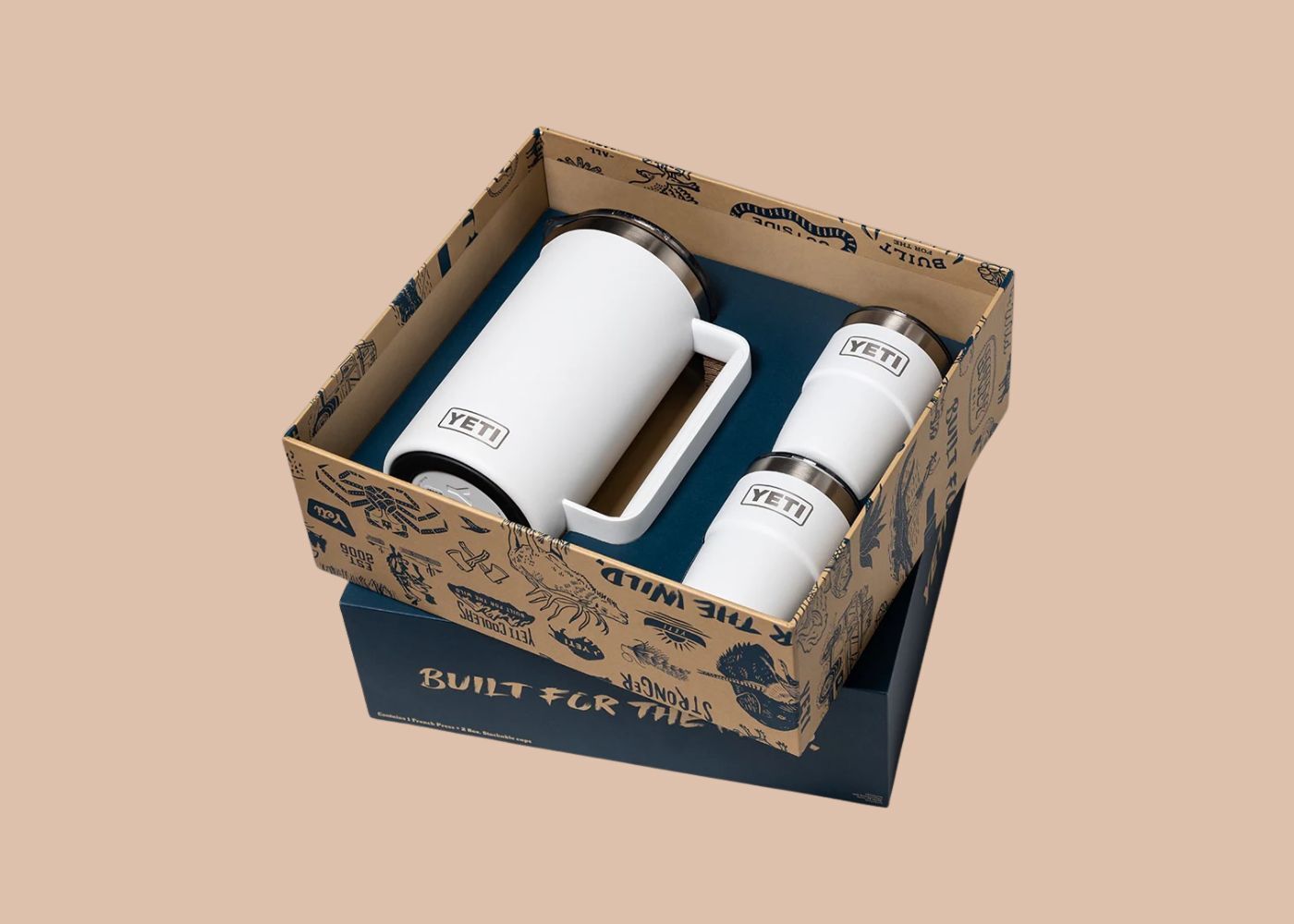In today’s crowded market, brands compete on more than price or product quality. Instead, they compete on experience. Customers want to feel considered, not just sold to. They crave ease over overwhelm, usefulness over clutter. Most of all, they want a moment of delight built into every purchase. As a result, experience becomes a powerful differentiator.
That’s where product bundling comes in. When done with intention, it turns simple combinations into thoughtful, complete and rewarding experiences. A well-built bundle becomes more than a marketing tool. It expresses brand purpose, creates emotional connection and delivers value that feels effortless.
Creating the perfect bundle isn’t about placing a few items together in a box. Rather, it’s about curation. The art of pairing products that make sense side by side and tell a cohesive story through structure, form and finish. Ultimately, the difference between a single item and a product bundle is the difference between a transaction and an experience. One says, “Here’s something to buy.” The other says, “Here’s everything you need – beautifully resolved.”
Here at Nextpack, we’ve spent more than two decades helping brands craft product and packaging that turn functionality into feeling. Whether it’s for retail, gifting or lifestyle collections, we design pieces that bridge practicality with emotion. The result is experiences that feel thoughtful, complete and rewarding. We’ve seen how considered design elevates not just a product, but an entire brand. It guides customers toward what feels intentional, cohesive and worth remembering.
Product bundling works because it simplifies choice while amplifying perceived value. In turn, it guides customers toward what feels complete. It builds trust and sparks loyalty. Whether displayed on a retail shelf or shared as part of a gifting moment, a well-considered product bundle feels generous, elevated and intuitive.
A perfectly curated set – ready to use or gift – evokes excitement, discovery and delight. For this reason, product bundling performs so powerfully in premium retail and lifestyle-led Direct to Consumer (DTC) brands. When product and packaging design are intentional, every detail tells a story – one that customers can see, feel and remember.
Thoughtful design turns product bundles into experiences – and experiences into loyalty. When your bundle feels curated and your packaging communicates care, customers notice. They return, they recommend, and they remember.


1. What is product bundling
At its core, product bundling is about creating value through connection. It’s a design-led strategy that transforms individual items into a cohesive, meaningful story. The idea is simple: combine two or more complementary products into one refined package that feels thoughtful, complete and desirable.
The most successful bundles go beyond convenience or commercial gain. They are intentional expressions of brand purpose – opportunities to showcase identity, simplify choice and build emotional connection. When designed with care, a bundle becomes a tactile expression of everything a brand stands for – its values, personality and attention to detail.
Customers rarely remember a single product purchase, but they remember how it made them feel – the smooth finish of the box, the anticipation as it opens, and the subtle details that signal quality and care. Those sensory cues shape perception and build attachment long after the purchase is made. That emotional response is what great product bundling captures.
Take our client Villeroy & Boch and their MetroChic Gift Set. Espresso cups, saucers and fine bone porcelain plates are impressive on their own. Together, presented in elegant gold-accented packaging, they form an experience – a ritual of refinement that reflects the brand’s timeless European heritage. That’s the essence of exceptional product bundling: harmony, narrative and purpose.
At Nextpack, we see bundling as storytelling through design – where form meets function and meaning meets material. Every detail, from typography and tone to insert fit and finish, contributes to how customers perceive value. These design elements don’t just decorate a package; they define how it’s experienced.
As we explored in our article Three Powerful Design Elements – The Power of Fonts, Colours, and Textures in Packaging Design, typography, colour and texture are the silent storytellers of every brand. The right combination can transform a simple box into something that feels elegant, tactile and emotionally engaging. When fonts convey trust, colours spark emotion, and textures invite touch, packaging becomes a multisensory experience customers connect with instinctively.
When those elements align seamlessly within a product bundle, the result is more than functional packaging – it’s an experience that communicates care, quality and story. Packaging doesn’t just hold a product; it holds the connection between brand and buyer.
2. The power of product bundling
When executed with intention, product bundling becomes more than a pricing tactic. It’s a storytelling tool that helps brands build connection, elevate perceived value and transform functional products into experiences that feel curated, not constructed.
At Nextpack, we’ve seen how well-designed product bundles can redefine how customers perceive a brand. A clever combination feels considered – a reflection of craftsmanship and care.
Elevate brand perception
When complementary products are combined with purpose, they create a unified experience that feels generous and refined. Our work with Lark Distillery captures this perfectly. Their beautifully presented packs pair craftsmanship with storytelling – the deep navy tones, gold detailing and precision-cut packaging echo the sophistication of the whisky within. Each element works together to create a sense of occasion, elevating the unboxing from a simple purchase to a moment of indulgence. It’s a perfect example of how colour, texture and structure can amplify emotional value and communicate brand prestige through design.
Build customer satisfaction and loyalty
In a world of endless choice, simplicity sells. Product bundling removes decision fatigue. When a set feels seamless and clearly considered, it fosters trust and encourages repeat purchases. Intuitive product and packaging reinforces that your brand values their time and understands their needs.
Drive profitability and efficiency
Commercially, product bundling increases average order value, promotes range discovery and helps manage stock efficiently. It can introduce new products, reposition existing ones or add exclusivity through limited collections – transforming surplus into something special and story-driven.
Create emotional connection
The strongest bundles evoke emotion. There’s a quiet thrill in unboxing something complete – in feeling seen, understood and valued. When product and packaging design work together through texture, tone and material, they turn product bundling into an experience worth remembering. It’s not just what’s inside that matters, but how it’s presented – the sensory cues that spark anticipation and connection long after the moment has passed.


3. Key considerations for effective product bundling
Successful product bundles don’t happen by chance – they’re designed with purpose and precision. At Nextpack, we combine psychology, strategy and design to create solutions that feel effortless for customers while achieving measurable results for brands. As a result, each bundle becomes an experience rather than a collection of items.
Design for perceived value
How a product bundle looks and feels directly shapes how customers perceive its worth. When done well, complementary products are thoughtfully combined, they create a sense of abundance – generous yet considered. For example, the Ashgrove Cheese Platter Selection captures this perfectly. Inside, you’ll find Signature Farmstead Cheese, rich quince paste and a hand-selected cheese knife – all beautifully presented in matte black packaging with gold foil and a clear window that transforms convenience into ceremony. Moreover, every element, from structure to finish, reflects care and craft. Design becomes storytelling – a visual and tactile experience that communicates refinement, quality and intent.
Simplify the customer experience
Choice can be overwhelming. Product bundling simplifies it. A strong bundle anticipates needs and answers unspoken questions like, “Is this everything I need?” From a design perspective, the unboxing should be intuitive, protective and elegant. Every insert, fold and touchpoint should feel deliberate – guiding the customer through an experience that feels natural and rewarding.
As we explored in our article How to Create Memorable Unboxing Experiences, these details matter. A thoughtful unboxing moment can transform a practical purchase into something emotional and shareable. Small touches such as layered reveals, hidden messages or personalised notes heighten perceived value and strengthen connection. The goal isn’t just to impress customers – it’s to engage them, leaving an impression that extends well beyond the initial purchase.
Balance commercial and creative goals
Product bundling is as much about business as it is about design. Pairing bestsellers with emerging products, creating seasonal edits or managing stock through storytelling can drive profitability without discounting. Packaging, message and finish should reinforce that story – presenting discovery, not clearance.
Stay agile and reflective
The best bundles evolve. Tracking sales, feedback and seasonal trends ensures ongoing relevance. A refreshed palette, structure or mix can transform perception. When every detail aligns, the result feels effortless, emotional and memorable.
4. Different types of product bundling
There’s no one-size-fits-all approach to product bundling – and that’s what makes it powerful. The right method depends on your audience, goals and the emotions you want your products to evoke.
Seasonal and promotional bundles
Seasonal bundling taps into cultural moments such as Christmas, Mother’s Day or summer gifting. For our client Callington Mill Distillery, the Festive Cask Gift Box captures this perfectly – deep red tones, gold foil and a green ribbon evoke celebration. Inside, whisky and pudding balance indulgence with tradition.
Subscription bundles
Subscription bundling builds rhythm and connection, turning repeat purchases into rituals. Each delivery becomes an opportunity to surprise and delight. For example, Recurly’s “Product Bundles in Subscriptions” guide shows how subscription bundles help fight churn and increase lifetime value by combining products and services into one cohesive offering. From a design perspective, subscription packaging must be compact, durable and delightful to unbox month after month.
Exclusive or limited-edition bundles
Exclusivity drives desire. Limited-edition collections create anticipation and a sense of rarity that makes customers act fast. These bundles often celebrate milestones, collaborations or seasonal moments, becoming keepsakes that extend a brand’s story beyond the product. The packaging and finer details elevate these sets from everyday to exceptional, inviting curiosity and transforming each purchase into a moment of pride – something to keep, not just consume.
Gift-ready bundles
Gift-ready product bundles combine product and packaging into one seamless experience. They’re designed to feel complete – ready to give, use or display straight from the shelf. For brands, this approach simplifies gifting while enhancing perceived value and emotional connection.
Our client YETI offers a standout example with their Take the Plunge Gift Set – a collection that includes the Rambler® 1 L French Press, two Rambler® 238 ml Stackable Cups, and a complimentary exclusive gift box. It’s the perfect gift for those who love the outdoors and adventure, balancing function and refinement in a way that feels generous and considered. The result is a gift that feels elevated, intentional and memorable – proof that thoughtful product curation creates experiences that connect on both practical and emotional levels.
Across all styles, one principle stands out: design with intent. When product and packaging design reflect both purpose and emotion, they transform a combination of products into a story worth sharing – one that captures attention and builds connection. That’s where we step in. With over two decades of experience in product and packaging design, Nextpack helps brands craft cohesive, story-driven bundles that resonate with customers and stand out on the shelf.


5. Why product bundling works
Product bundling succeeds because it delivers usefulness and delight at the same time. Customers love the ease of a ready-made set, while brands benefit from higher perceived value, smoother stock flow and a stronger story. When done well, bundling doesn’t feel like selling more – it feels like thoughtful curation.
At Nextpack, we’ve seen this in practice through our ongoing work with Maggie Beer – a brand synonymous with warmth, craftsmanship and authenticity. Their beautifully composed bundles, such as the Baker’s Bundle Gift Pack and Style Up Your Kitchen Gift Pack, show thoughtful product pairing can elevate both practicality and emotion. Each bundle brings together complementary pieces – from sustainably sourced olive wood utensils and teak rolling pins to cotton and linen aprons – designed to be both functional and beautiful. Together, they create a gifting experience that embodies the brand’s hallmark generosity and charm.
Bringing these qualities to life through product and packaging design is at the heart of what we do at Nextpack. Every structure, insert and finish is meticulously considered to ensure multiple products present as one cohesive idea. When the box opens, everything feels intentional – aligned with the brand’s values and crafted to create a moment of joy.
Ultimately, product bundling works because it removes friction and adds feeling. It shows customers that the thinking has already been done for them. When brands like Maggie Beer pair thoughtful, design-led bundles with packaging that reflects their identity, customers notice. They connect emotionally, purchase with confidence and remember the experience long after the last ribbon is untied.
To see how we bring this level of care and craftsmanship to life, explore our Maggie Beer Case Study – one of the most extensive product and packaging design collaborations we’ve developed to date. It showcases how functional design, premium materials and considered presentation come together to create products and packaging that are as enduring as the experience they deliver.
That’s the power of product and packaging design done with purpose – and it’s what we strive to achieve every day at Nextpack.
Conclusion
At its best, product bundling isn’t just a sales tactic – it’s storytelling through design. It unites products that naturally complement one another, transforming them into experiences that feel intentional, elevated and memorable – while simultaneously driving measurable commercial impact. When executed strategically, product bundling can increase average order value, enhance profit margins, boost sell-through rates and strengthen customer lifetime value. Done thoughtfully, it becomes a lever for both emotional connection and sustainable business growth, aligning brand experience with commercial performance.
Here at Nextpack, we’ve seen how thoughtful product and packaging design can turn simple assortments into curated collections that people connect with. Every project reinforces one truth: when design is driven by purpose, customers notice. They respond not just to how a product looks, but to how it makes them feel. Our role is to create design that transforms functionality into emotion – packaging and products that inspire loyalty and leave a lasting impression long after the unboxing moment has passed.
Product bundling works because it feels generous. It invites trust, simplifies decision-making and celebrates the joy of giving and receiving. For us, that’s what great product and packaging design has always been about – transforming functionality into feeling and practicality into pride.
After more than two decades shaping product and packaging design for some of Australia’s most recognisable brands, the Nextpack team understands that true design goes beyond protection – it elevates perception. Great packaging safeguards what’s inside, while exceptional product and packaging design tells a story before the product is even touched. Every detail we create is crafted to enhance usability, evoke emotion and bring a brand’s vision to life.
If you’re ready to explore how thoughtful product and packaging design can elevate your next range or gifting collection, we’d love to collaborate. At Nextpack, we design products and packaging that not only look beautiful on the shelf but feel unforgettable in the hands of your customers.
